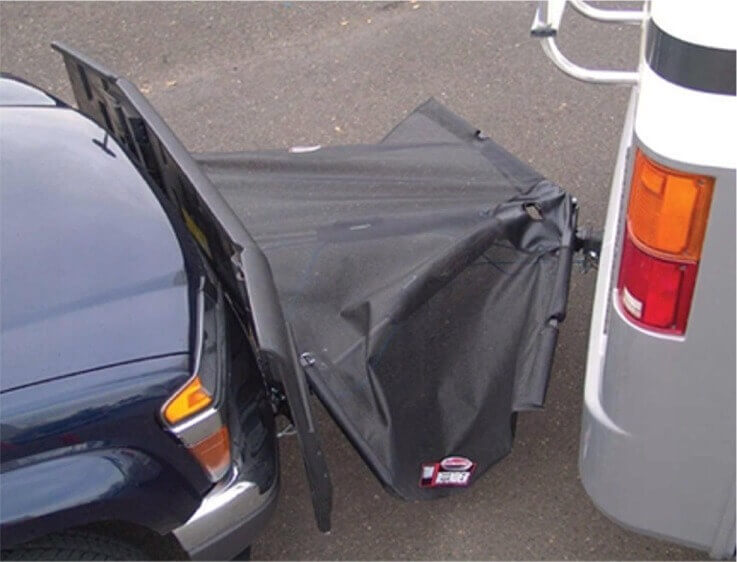 If you are new to RV-ing, and are still getting comfortable driving your motorhome, the thought of dragging a car or SUV behind you can be intimidating. There's the extra length and different turning radius to deal with first of all. Secondly, with all the parts that are out there you may be unsure of where to start. Dinghy towing does add some extra steps to your departure and arrival, but a toad allows you to easily explore the area with less hassle later. Taking a car with you gives you the flexibility to easily make short trips without unhooking your RV from campground utilities. Today we'll be going over just a few of the more essential components of a towing system to get you started.
Once you've consulted your vehicle's user manual to be sure if it can be towed, you can purchase the correct base plates and have them installed on your vehicle at the same time as you have a tow bar added to your motorhome. Base plates allow the vehicle to be easily and safely hooked up to your coach via the tow bar. Blue Ox base plates are made specifically for your vehicle's make and model. They are not interchangeable, so keep that in mind if you end up buying a new car or switching vehicles. Base plates are available for a large number of manufacturers to accommodate nearly any type of car or SUV. The Blue Ox base plates come with the hardware and directions to get the installation done yourself. If you aren't confident that you can get the job done on your own, you can always have them professionally installed.
Tow bars can be either self-aligning or rigid A-Frame, and there are significant differences between the two. As the name implies, a rigid A-Frame is set in the same position, while a self-aligning model can adjust itself to correctly fit your vehicle. While a self-aligning tow bar is easier to install, an A-Frame model is typically less expensive. When choosing a tow bar, make sure it is compatible with your base plate and vehicle. Also be aware of the towing capacity not only of your tow bar, but of your coach as well. Despite their size, some motorhomes may not have the ability to take on the extra weight of a towed vehicle.
Driving along different types of roadways or in varying weather conditions can kick up all types of road debris. If you're concerned about damage to your dinghy vehicle as it follows you to your destination, products like the
Roadmaster Tow Defender (pictured) or the Roadmaster Guardian Rock Guard can protect its paint, headlights, and windshield while you're on the road. The Tow Defender only weighs 14.5 pounds and is designed for quick and easy use. The Guardian Rock Guard acts like a shield against rocks and gravel, not only protecting your towed vehicle, but preventing them from bouncing back onto your RV.
These are only a few examples of the towing accessories available.
Braking systems, for example, are a requirement in most states when towing a vehicle. A braking system will allow your vehicle's brakes to stop along with your RV's. Braking systems can be portable or permanent, depending on whether you plan on switching vehicles. They can use different braking types, such as proportional braking, which uses a sensor to track how fast your RV is stopping and responds with your vehicle's brakes accordingly. Full braking on the other hand will take on the entire weight of the towed vehicle. Wiring kits may also be needed, activating your towed vehicle's taillights at the same time as your RV's, so that anyone driving behind you can still be alerted if you are turning or stopping. If you have questions about parts you need for dinghy towing, please
contact us.
By Julie T
Dinghy Towing Gives Travel Flexibility
Some dinghy towing items to consider:
|